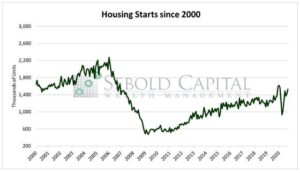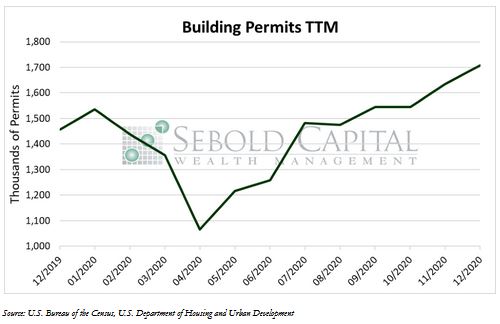 Housing starts track the number of new residential construction projects over a month. This indicator has implications for demand in construction spending/jobs, consumer wages, and complementary sectors such as durable household item sales. Along with building permits, housing starts is considered a leading economic indicator.
Housing starts track the number of new residential construction projects over a month. This indicator has implications for demand in construction spending/jobs, consumer wages, and complementary sectors such as durable household item sales. Along with building permits, housing starts is considered a leading economic indicator.
Housing starts increased by 91,000 units to 1.67 million in December, a 5.77% jump from the previous month. Year-over-year, new residential construction is up 5.17%, indicating that low mortgage rates and a shortage of supply continue to drive housing construction. New building permits, an indicator of future housing demand, increased by 4.5% to 1.7 million—the highest level since 2006.
Homebuilding surged last month as record-low interest rates continue to drive the housing market. Demand has increased even further as people who continue to work remotely seek to leave city centers in favor of lower-density areas. However, increases in material costs and a lack of affordable labor could potentially dampen housing demand. In particular, the price of lumber has been on the rise for the last few months, making new residential construction more expensive overall. However, demand remains strong for the time being and will likely remain so as long as mortgage rates stay this low.


January 21, 2021
